AFL 2022: Rapid testing to be implemented league wide in battle against spread of Covid
The AFL is determined to safeguard the competition against the spread of Covid as AFLW players will be first to undertake rapid testing, a practice set to be used league wide over the next year.

AFL
Don't miss out on the headlines from AFL. Followed categories will be added to My News.
AFLW players and coaches are being subjected to daily rapid antigen testing before entering clubs as the league safeguards the competition against the inevitable spread of Covid.
In a practice set to be used across both AFL and AFLW competitions in the next 12 months, players started testing in recent days as part of the official start to AFLW pre-season training.
When players arrive at clubs they immediately receive the test, which includes them swabbing their own nasal cavity then returning to their cars or waiting outside the club for 15 minutes awaiting a result.
Kayo is your ticket to the best local and international sport streaming Live & On-Demand. New to Kayo? Start Your Free Trial >
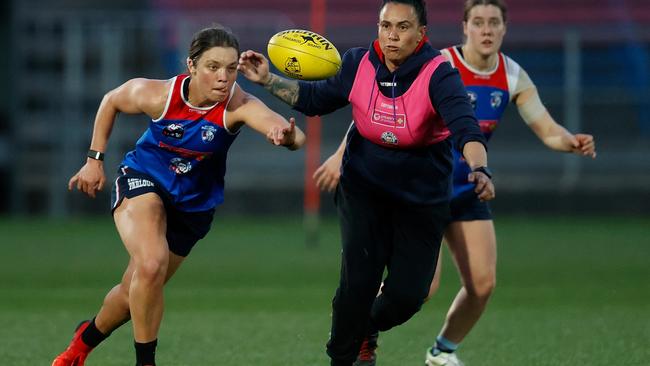
Only if the test comes back negative for Covid are they allowed to enter the clubs for training and meetings.
The players are also subjected to weekly testing from the league’s official tester Dorevitch Pathology.
But the rapid antigen tests provide quick results that will lessen the likelihood of Covid-positive players spreading coronavirus or turning clubs into exposure sites.
The AFL believes there are a handful of players and staff yet to be vaccinated after Friday’s deadline for essential workers in Victoria to receive a first dose under state government rules.
Those officials and players will be unable to train or enter facilities until they are vaccinated as the league and their clubs continue the education process.
North Melbourne told the Herald Sun on Sunday its entire playing, coaching and football department cohort would be fully vaccinated by November 5.
Carlton and Collingwood’s players have all had at least one vaccination with full lists available to train over the weekend.
There has been at least one AFLW player who expressed some reservations about vaccinates on Instagram over recent weeks.
But it is understood that the player has now been vaccinated and resumed training in the past week.
An AFL spokesperson said on Sunday there may be a handful of players across the AFL and AFLW programs who had not been vaccinated by last Friday’s state government deadline.
The AFL said it would not disclose the vaccination status of players or staff as it respected medical confidentiality.
But the AFL believes almost without fault players will be vaccinated so they can proceed with the AFL and AFLW seasons.
The league’s own vaccination policy is being finalised and is expected to be out soon.
Victorian premier Dan Andrews said on Sunday the state government would have more detail on the crowd numbers and rules for events across summer in coming weeks.
With the AFLW now pushed back to start on the weekend of January 6-9 there is a high level of confidence about crowd numbers of fully vaccinated patrons at games across Australia.
The league will still have to combat closed borders in some states including West Australia but there will be ease of travel between Victoria and NSW.
But given most of Australia is expected to eventually hit double vaccination figures above 90 per cent the prospect of full crowds at AFL matches as early as Round 1 next year is a legitimate prospect.
Time is running out for unvaccinated AFL staff
The AFL and its clubs will continue to provide further education to the “handful” of authorised staff from Victorian-based clubs who are yet to have their first Covid vaccine dose ahead of Friday’s State Government deadline.
It is understood the overwhelming majority of authorised workers from the AFL and AFLW programs as well as other football staff have already received either their first or second dose.
Only a very small number have so far not received their first jab, which would preclude them from being recognised as an essential worker from Friday onwards.
Victorian Premier Dan Andrews announced a mandate earlier this month that all authorised workers required at least one Covid vaccination before October 15. All essential workers will be required to be fully vaccinated by November 26.
The AFL held discussion with the clubs earlier this week in an effort to find out more about their players and staff.
They believe only a “handful” of authorised workers are yet to have their first dose.
It is believed that a few of those believed they may have had an exemption, but that has not proven to be the case.
The AFL has worked closely with the State Government and with the state’s health authorities since the start of the pandemic and has been active in encouraging its clubs to ensure their players and staff are following the protocols.
Who wins from $40m AFL Grand final windfall
A massive grand final windfall of up to $40 million will save the AFL from another heavy loss in a Covid-stricken season and could benefit players and even the league’s expansion plans.
The Herald Sun understands the financial returns from the stunning Perth Stadium decider means the league’s worst-case scenario is a small loss across a chaotic 2021 season.
The league’s Perth Stadium ticket sales and income from an array of corporate boxes could return a grand final profit between $35 million and $40 million.
It follows the revelation that the AFL was spending around $6 million a week at the height of the Delta variant to fly clubs around the country and put them in hotels to help outrun the pandemic.
Last year the league recorded a $22 million loss, following a drop in revenue of $119 million. The AFL’s total revenue for 2020 was $675 million.
The league continues to negotiate with the AFLPA on a new collective bargaining agreement after cutting player salaries for 2021 by 9 per cent.
That entire deal is likely six to eight months from completion given the complexities of negotiating a collective bargaining agreement.
When the league cut player pay by 9 per cent last year under a heads of agreement it committed to a new CBA from 2022-24.
If that deal cannot be stuck, the league will revert to the current CBA deal for 2022.
The improved financial position will at worst mean players will not have to take another pay cut for 2022.
Under the unlikely scenario the AFL forced another pay cut on players, it would have to be a mandatory figure across the board for every single player after the league made clubs enforce the pay cuts of players last year.

Player payments for 2022 are set at $14,769,322 if there are no further cuts, but list managers are still awaiting certainty on the 2022 TPP.
If the league can rebound next year with strong crowds of vaccinated patrons, it will be in a better position to reward players with pay rises as well as strongly invest back into the game, the AFLW competition, grass roots footy and community development.
The AFL has also put off an AFL club vote on an expanded competition until around August next season.
The league said recently it would not be financially prudent to make a decision on Tasmania’s bid for a stand-alone team this year with $700 million in lost earnings from clubs and the AFL over the pandemic.
But a break-even result this season for the AFL and a return to strong profits next year would ease club concerns about profitability as they voted on a 19th team.
North Melbourne chief executive Ben Amarfio said last week he was keen to see a 19th team in the competition, but said the Roos would only vote for the expansion club if it was financially viable.
“It‘s a shame about the timing,” Amarfio said.
“In any other time, in any other period, the vast majority of clubs would be in absolute agreement that Tasmania deserves a team.
“The only thing that’s holding that decision back is the timing. I would love to see Tassie have their own team but we need to be financially prudent and do it in a process that makes sense so the industry can afford it.”
WHAT WILL BE AFL’S BIGGEST ISSUES IN 2022?
— Glenn McFarlane and Michael Warner
What will football look like in 2022?
After two Covid-hit seasons in a row, Glenn McFarlane and Michael Warner look at the big issues facing the game next year.
VACCINATIONS
The AFL will avoid imposing a formal “no jab, no play” policy on the game’s 850 players. Instead, players and industry staff will be strongly encouraged to get vaccinated. But no such leniency will apply to football fans. A “no jab, no entry” rule for sports stadiums across the country is likely to be enforced by governments. A formal position from the AFL and the AFL Players’ Association is imminent.
FINANCES
Emergency costs to keep the season alive soared beyond $6m a week at its peak, but club bosses have been told the AFL fared better financially than was forecast in 2021. The net result is tipped to come in well below last year’s operating loss of $22.8m. A $40m bonanza from the Grand Final in Perth was a timely cash injection.
DISTRIBUTIONS
Clubs have been told to brace for cuts to base AFL distributions of about $2m per club next season, but will be given the right to negotiate extra funding based on their financial situation.
SALARY CAP
The exact size of next year’s salary cap remains unknown. Clubs were permitted to spend $13.19m on players this season but negotiations over the 2022 cap are ongoing. Players have taken hefty pay cuts across the two-year Covid crisis. Under the collective bargaining agreement struck prior to Covid, the salary cap was supposed to hit $14.77m in 2022.

SOFT CAP
The $6.2m limit on football department spending will increase by a modest $250,000 next season. Exemptions are in place for some mental health-related expenses. Hawthorn will be the hardest hit, paying $450,000 in the cap as part of its contract settlement with ex-coach Alastair Clarkson.
LIST SIZES
A final decision on list sizes for 2022 has not been made. In 2021, clubs were permitted to have a maximum of 38 primary list players and up to six rookie list players.
MEMBERSHIPS
Massive numbers of club members have stayed loyal across two seasons of disruptions, despite the wipe-out of games at Victorian venues. Melbourne Storm laid down the gauntlet to AFL clubs last week by covering the costs of next year‘s membership fees as a gesture of goodwill.
ATTENDANCES
Crowds are expected to be back to full capacity next season but it remains to be seen whether two years of disruption will have an impact on attendances and spectator habits. Gate takings are crucial to the game’s bottom line.
RULES
AFL football boss Steve Hocking jumped ship in July (to take charge at Geelong), triggering a reshuffle at league headquarters. Former North Melbourne coach Brad Scott has taken over some of Hocking’s responsibilities but reports to the new general manager of football, Andrew Dillon, the league’s long-time legal and integrity chief. Hocking’s contentious ‘stand rule’ failed to curb a slump in scoring but AFL boss Gillon McLachlan has indicated it is here to stay.
GAME LENGTH
A return to 20-minute quarters in 2021 was widely applauded by footy fans and broadcasters (who pay the bulk of the bills). Some, including broadcasters Gerard Healy and Eddie McGuire and Geelong coach Chris Scott, want AFL game time reduced. But it seems certain the AFL will stick with tradition.
COMMISSION
The nine-person AFL Commission has been operating in a reduced capacity since the retirements of Kim Williams and Jason Ball in January. Five club presidents have been engaged to help select their replacements with a heavy emphasis on football industry IQ. Commission chairman Richard Goyder continues to resist calls for a sweeping independent review of the AFL’s governance structure almost 30 years since the last.
CEO
2022 is tipped to be McLachlan’s last season as AFL boss. Senior league executives Andrew Dillon and Travis Auld are the leading internal candidates, while highly-respected Richmond boss Brendon Gale is the club land favourite ahead of straight-shooting Greater Western Sydney CEO Dave Matthews.

TRADE PERIOD
The annual player exchange frenzy runs from Monday, October 4 until Wednesday, October 13.
DRAFT
The 2021 AFL national draft will be held in Melbourne over two nights from November 24-25.
BROADCASTING
AFL TV rights partners Foxtel and Channel 7 are contracted until the end of 2024.
GRAND FINAL
McLachlan has conceded there is a strong supporter sentiment for a return to the traditional 2.30pm bounce when the premiership decider returns to the MCG. Talk of an interstate grand final every four or five years is reasonable in principle but would be in breach of a watertight contract between the AFL, the Melbourne Cricket Club and Victorian Government, which has pumped $225 million of taxpayer funds into the league’s privately-owned Marvel Stadium redevelopment in exchange for the agreement.
PRE-SEASON
First to fourth year players will hit the track on November 22. Fifth-season and beyond players return on December 6. Players will be back on leave from December 19 until January 10.
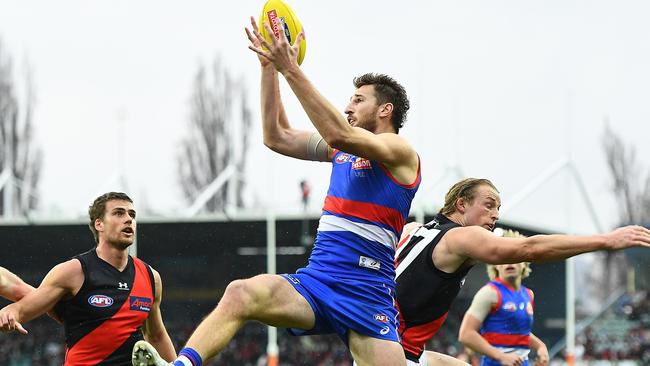
TASMANIA
The highly-anticipated Carter Report into the future of Tasmanian footy was a fizzer but the 18 AFL clubs could still be given the chance to vote on the establishment of a stand-alone Tassie team sometime next year. A growing number of clubs have already expressed in-principle support.
AFLW
The AFLW seasons kicks off on January 6, the last before all 18 clubs fill a team for the 2022/23 season.
FIXTURE
A flexible floating fixture was put in place this year to cater for the Covid-19 crisis but is likely to be scrapped in favour of a traditional schedule where all games and starting times are locked in prior to the season’s commencement. The extent of Thursday night football will depend on an agreement between the league and the players’ union over exposure to five and six-day breaks.
PREMIERSHIP MARKET
Melbourne ($5), Western Bulldogs ($7), Brisbane ($8), Geelong ($9), Port Adelaide ($9), Richmond ($11), Sydney ($11), West Coast ($15), GWS ($17), St Kilda ($21), Fremantle ($26), Essendon ($26), Carlton ($34), Adelaide ($67), Collingwood ($67), Hawthorn ($81), Gold Coast ($81), North Melbourne ($101)
BARTLETT: 55-YEAR LOW PROVES AFL RULE CHANGES FAILED
Footy legend Kevin Bartlett has urged the AFL to scrap the contentious ‘stand’ rule, declaring it an “embarrassing” blight on the game.
The Tigers great said a raft of recent rule changes aimed at reversing plummeting scoring rates had failed miserably, and should all be binned.
Bartlett also believes interchange rotations should be slashed from 75 to 25 if the AFL wants to have a more appealing game for the fans in 2022.
“We have made a lot of changes to the game in the last few years … and I can’t think of one of them that has made any significant difference to scoring,” Bartlett told News Corp.
Kayo is your ticket to the best local and international sport streaming Live & On-Demand. New to Kayo? Start Your Free Trial >
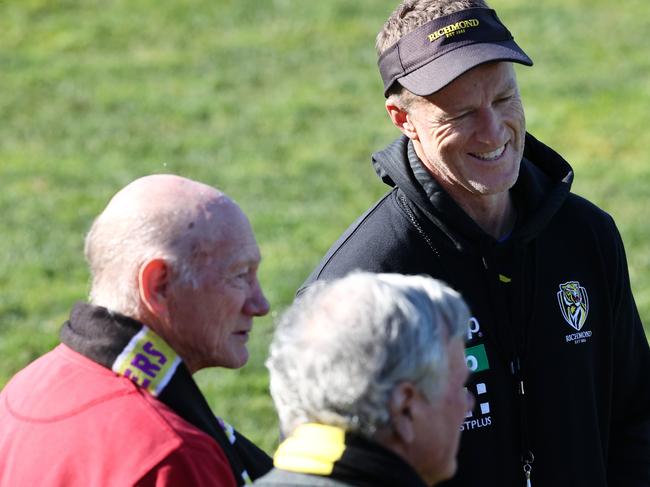
Bartlett’s biggest bug bear is the ‘stand’ rule, which he says is contrary to the spirit of the game.
“The ‘stand’ rule is an embarrassment to the game because it pits 18 against 17 and the game was never designed to leave a team a player short,” Bartlett said.
“If a player can’t guard the mark, they are made to look foolish when a player runs off alongside them and the umpire isn’t quick enough to call play on.
“Guarding the mark was always a strong point of the top sides. It was almost an art form. Now the man on the mark is like a statue, sometimes it is like he is stuck in concrete.”
Bartlett said the fact that this year’s Coleman Medallist Harry McKay kicked only 58 goals was further evidence the AFL rule changes had failed.
“This year we bring in the ‘stand’ rule and the leading goalkicker kicks 58 goals for the season, which was the lowest tally since 1965 – apart from last year when we only played 17 games and 16 minute quarters,” he said.
The mastermind of the ‘stand’ rule, former AFL footy boss Steve Hocking, declared in March that he envisaged the return of the 100-goal full forward during his time in charge.
“Give me another couple of years. I’m quietly confident,” Hocking said.
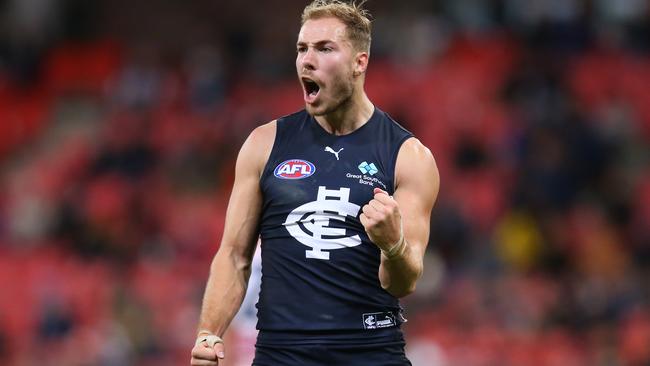
Bartlett, an AFL Hall of Fame Legend and former Laws of the Game committee member, has also called for the end of the “time-wasting” ruck nomination rule, saying it reminded him of “under 10s”.
“I don’t know why we always need to change things; there was nothing wrong with the third-man up rule,” he said. “It was a great part of the game.”
“All this putting your hand up to say who is going up in the ruck is under 10s stuff.”
Bartlett said the AFL’s decision to cut the interchange cap rotation from 90 to 75 for this year was a step in the right direction, but stressed it was nowhere near enough.
“It was the first time the AFL has really acknowledged that interchange helps to cause congestion and density around the ball, but unfortunately 90 down to 75 doesn’t make a big enough difference,” he said.
“You’ve still got 150 fresh players coming onto the ground and 150 tired players going off.
“I would bring it back to 25 (rotations per side).
“I have heard people say it is radical to bring it down from 75 to 25. Well, it is not radical because we played 100 years with no interchange.
“What is radical is what we are doing now.”
Bartlett was encouraged to hear the AFL would almost certainly keep game time at 20 minutes plus time-on.
“That’s the perfect time for Australian rules football. It is folly for anyone to suggest otherwise. I have never heard anyone walk out of a ground and say the game is too long.”
Bartlett, 74, played 403 games for Richmond between 1965-83.
The AFL is intent on making minimal changes to the game next year after two seasons of Covid-inflicted turmoil.
Hocking, who quit the AFL in July to take charge at Geelong, has been replaced by long-time league legal chief Andrew Dillon and former North Melbourne coach Brad Scott.
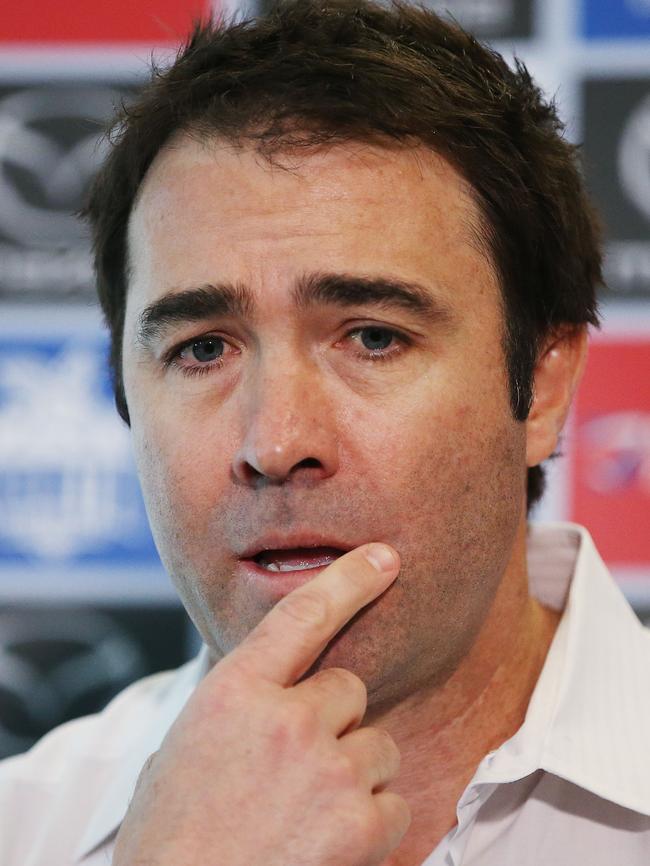

A final decision on the size of next year’s salary cap has not been made, while the football department soft cap of $6.2m will rise by about $250,000.
League boss Gillon McLachlan has already indicated that the grand final will return to its traditional afternoon time slot next year.
The floating fixture used in 2021 is likely to be scrapped.
First to fourth year AFL players will return to training on November 22.
More Coverage
Originally published as AFL 2022: Rapid testing to be implemented league wide in battle against spread of Covid




